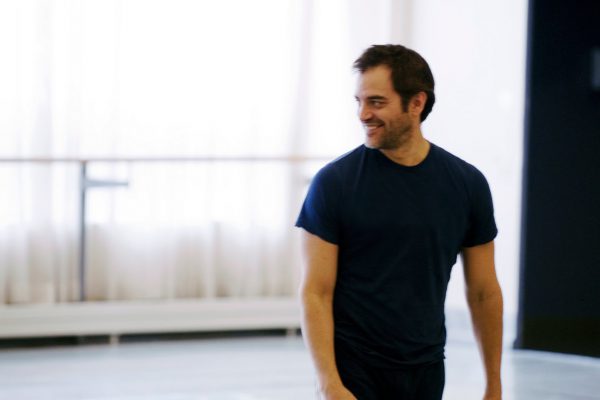Everyone wants to be Beyoncé. At least, that’s how Beyography leader, Nicky Nasrallah, sees the world. And he has a point. Dance classes marketed with the pop icon’s name have been skyrocketing in popularity around Toronto, and with the recent release of Justin Bieber’s colourful and energetic Sorry video, the demand to leave a two-hour class with a great workout and a feeling of accomplishment has only grown. Leading a booming number of focused, first-time dancers, Nasrallah says the experience is one these Beyoncé fans can “take home and cross-reference with the videos and feel one step closer to her.” However, here the conversation around intellectual property and copyright in dance is not straight forward.
Toronto-based hip hop teacher Diana Reyes has also been asked by local dancers to teach Bieber-based classes. With higher demand for a Sorry video class than a non-music video one may garner, Reyes has received media attention and steadily sells out a class size of forty; although, the popularity of these classes comes with an unsettling undertone. As a well-connected artist in her field, Reyes was asked by a fellow choreographer living in Los Angeles to stop teaching another artist’s work for profit.
For Nasrallah, it’s more about homage. He says he’s constantly “slipping facts about Beyoncé, her tours and her dancers into the class.” It’s about “paying respect to their work and spreading the love of the fantastic team behind her.” And why wouldn’t Beyoncé be happy with others dancing her moves? It’s essentially free marketing and hype for her as a brand.
Beyoncé is actually an interesting example as she’s not the most impartial artist in the copyright conversation, considering her own track record of music videos that were “inspired by” others’ work. Some examples to illustrate this point: Single Ladies borrowed heavily from Bob Fosse’s Mexican Breakfast; Get Me Bodied adapted the scene from Fosse’s iconic Rich Man’s Frug; and Countdown infamously copied Belgium choreographer Anne Teresa De Keersmaeker’s videos Achterland and Rosas danst Rosas.
In addition, none of Beyoncé’s videos feature her own choreography. In the industry, there are artists behind the big names, and it’s their work that is being profited from. Opinions are varied on whether or not these choreographers mind having their work taught to others. Reyes says she knows New York- and Los Angeles-based choreographers who expressed “mild distaste” about the idea, whereas Nasrallah, having been introduced to Frank Gatson Jr., Beyoncé’s creative director and occasional choreographer, says, “He didn’t seem to care.”
Legally in Canada, the growing question of copyright in dance is still a rugged, grey area, made all the more complex in an increasingly digital age. What is crystal clear in any context is that if a choreographer requests the teaching of their work to stop, via any mode of communication, it legally has to. Notable exceptions in copyright law include fair dealing, which allows teachers to distribute copyrighted material for personal study and for the students’ benefit, so a dance class could aruably fit into this category. However, the element of commercial gain muddies this exception, as well as the work of that class appearing publicly, like on social media or in the media.
Even if teachers wanted to pay a copyright fee to be able to use others’ choreography in class, they couldn’t. There’s no structure like music in Canada, which has SOCAN, for dance teachers. Reyes, wanting to be respectful to the original artists, wonders why with the increase of music video classes, and no sign of them going away, no such royalty system exists. With such uncharted case-by-case territory, does what’s right come down to a personal moral and ethical choice?
For perspective, imagine if someone watched a YouTube video of a four-minute excerpt of a Crystal Pite piece and decided to teach it. Despite interest, serious flags would be raised over marketing a Pite class taught by someone who has neither studied with nor met the artist, let alone gained their permission to teach their choreography. Consider Israel-based choreographer Ohad Naharin who had to instill strict rules as to who can teach Gaga workshops, Gaga being his defined movement language and pedagogy. It is not always enough to love and respect someone’s work and want to share and celebrate it with the world for profit. One often has to travel, pay and train rigorously to be granted approval.
We’re in an age of mobile devices and social sharing. Choreographers creating for pop artists know the work will by its very nature be popular and accessible worldwide. Emulating moves from music videos is as old a concept as is dance in music videos (Michael Jackson’s Thriller, anyone?). The accessibility and consequent potential profit from such work is the newer issue, and a legal standard for remuneration and credit are lagging in protecting choreographic and intellectual property.
Tagged: Commercial, Uncategorized, ON , Toronto



